The German occupation of Poland was exceptionally brutal. After defeating the Polish army in September 1939, German authorities ruthlessly suppressed the Poles. German policy sought to destroy the Polish nation and culture and exploit Poles for forced labor.
![Polish hostages in the Old Market Square. Bydgoszcz, Poland, September 9-10, 1939. [LCID: 50835] Polish hostages in the Old Market Square. Bydgoszcz, Poland, September 9-10, 1939. [LCID: 50835]](https://encyclopedia.ushmm.org/images/large/b8908489-d526-4edb-810f-7f55619d1dcb.jpg)
Polish hostages in the Old Market Square. Bydgoszcz, Poland, September 9–10, 1939.
Just after the German invasion of Poland, armed groups of ethnic Germans in the city of Bydgoszcz staged an uprising against the local Polish garrison. This was put down by the next day, one day prior to the entrance of German troops in the city on September 5. A local command structure was quickly put into place by Major General Walter Braemer, and in response to continued attacks upon German personnel in the city, severely repressive measures were instituted in the following days. Assisted by Military Field Police Section 581, Einsatzgruppe IV under the command of SS-Brigadefuehrer Lothar Beutel, and the 6th Motorized Police Battalion, Braemer's troops assembled hundreds of hostages and executed hundreds more at various locations in and around the city, including the Bydgoszcz market square. As a result of these actions, at least 500 Polish civilians, many of whom were members of the local intelligentsia and clergy, were shot and over 1,000 more incarcerated between September 6 and 11. On September 11, Braemer moved his headquarters out of Bydgoszcz, placing Police Colonel Goesch, SS-Brigadefuehrer Max Henze, and Lothar Beutel in command. These men continued to order the execution of hostages, particularly of members of the intelligentsia and clergy, in accordance with instructions given by Heydrich and Himmler for the "political housecleaning" of Poland.
Item View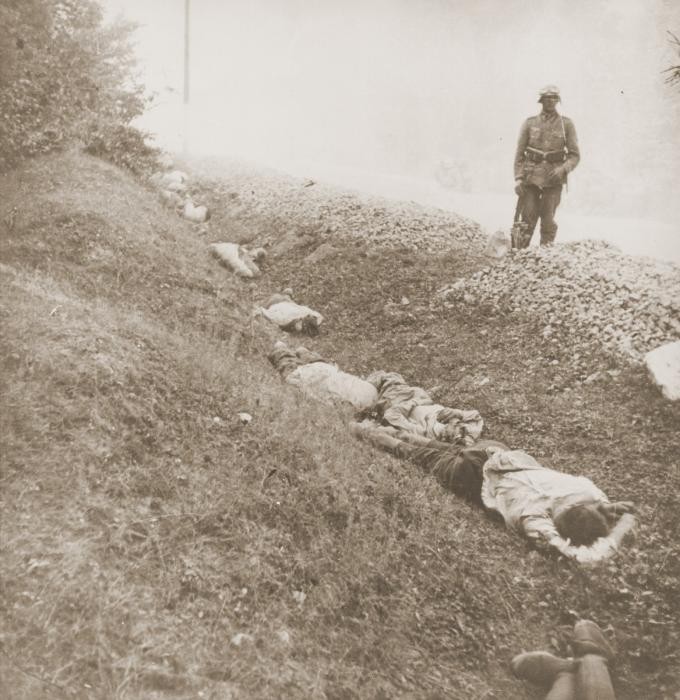
Execution of Polish prisoners of war near Ciepielow in September 1939. Some of the 300 Polish POWs who were executed here by firing squad are visible. In the background is a Wehrmacht soldier who participated. Ciepielow, Radom, Poland, September 1939.
Item View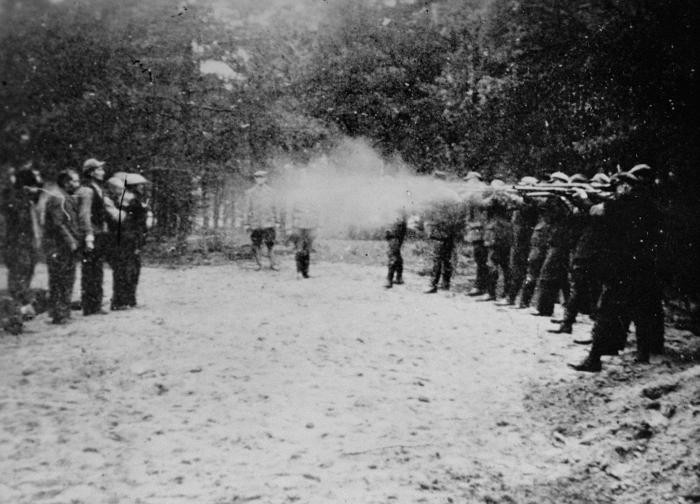
The execution of Poles in the Barbarka Forest by members of the Selbstschutz (ethnic German self-defense organization). An SS officer can be seen standing in the background. Torun, Bydgoszcz, Poland, October 1939.
Item View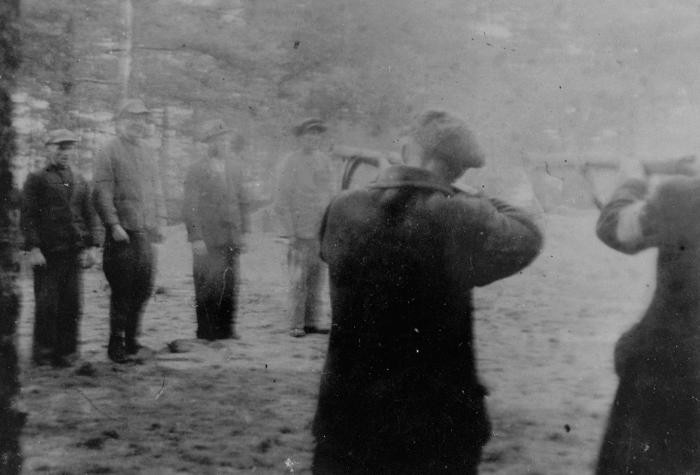
The execution of Polish civilians by the Selbstschutz (ethnic German self-defense organization) and SS in the forest near Tuchola. Bydgoszcz, October 27, 1939.
![German soldiers execute Piotr Sosnowski, a priest from Tuchola. [LCID: 50840] German soldiers execute Piotr Sosnowski, a priest from Tuchola. [LCID: 50840]](https://encyclopedia.ushmm.org/images/large/49f8a2a7-f357-4696-9bac-80bf8194cd9d.jpg)
German soldiers execute Piotr Sosnowski, a priest from Tuchola. Piasnica Wielka, Poland, 1939.
Item View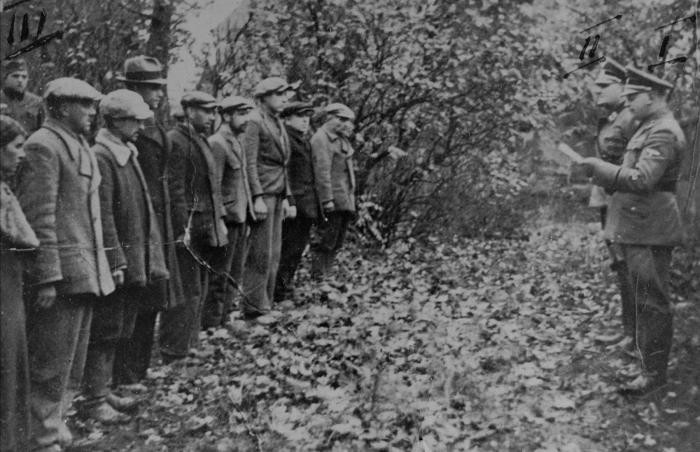
An SD officer reads a list of charges against a group of Polish civilians just before their execution in the forest near Szubin. A German soldier can be seen in the left background and a woman is included in the number of those to be shot. According to the Main Crimes Commission, one of the officers involved is SS Major Ernst Tiedemann. Szubin (Bydgoszcz), Poland, October 21, 1939.
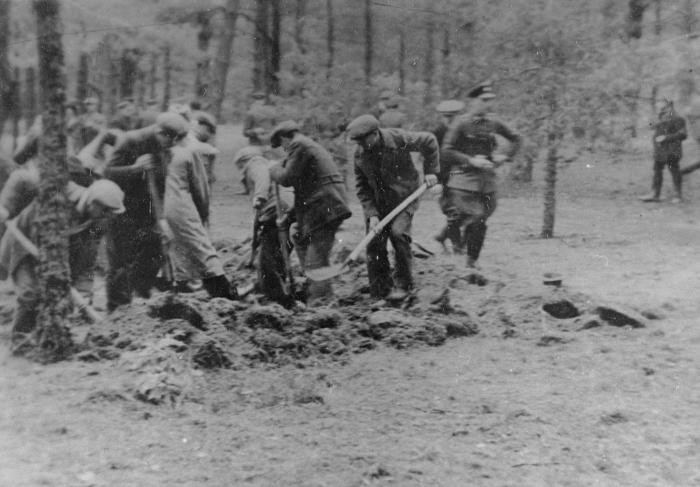
Polish civilians under SS and Selbstschutz (ethnic German self-defense organization) guard are forced to dig a mass grave prior to their execution in the forest near Tuchola. Tuchola Forest, Bydgoszcz, Poland, October 27, 1939.
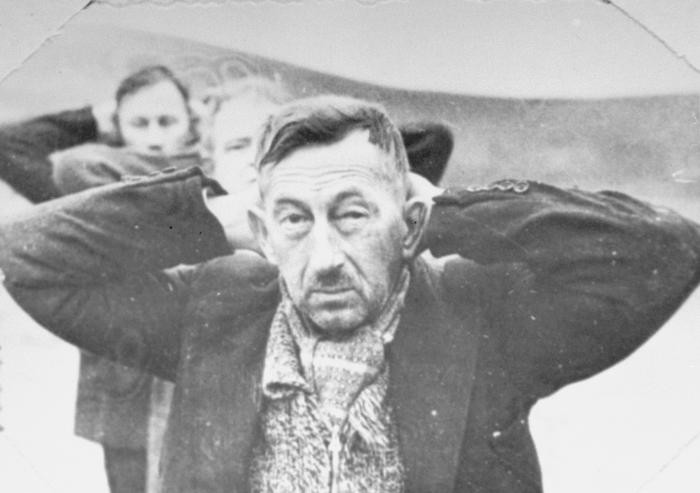
Teachers from Bydgoszcz and the surrounding area a few moments before their execution by firing squad in the "Valley of Death" near Fordon. The first in line is Wladyslaw Bielinski, a primary school teacher from Wiag.
The Nazis sought to destroy Polish culture and the Polish nation, and eliminate any resistance, by arresting and murdering Poles. German police, SS, and army units and ethnic German “self-defense” forces shot thousands of Polish civilians. Among those shot were wealthy landowners, some clergymen, intellectuals, and teachers, as well as hostages and prisoners of war.
Bydgoszcz, Poland, October–November 1939.
Item View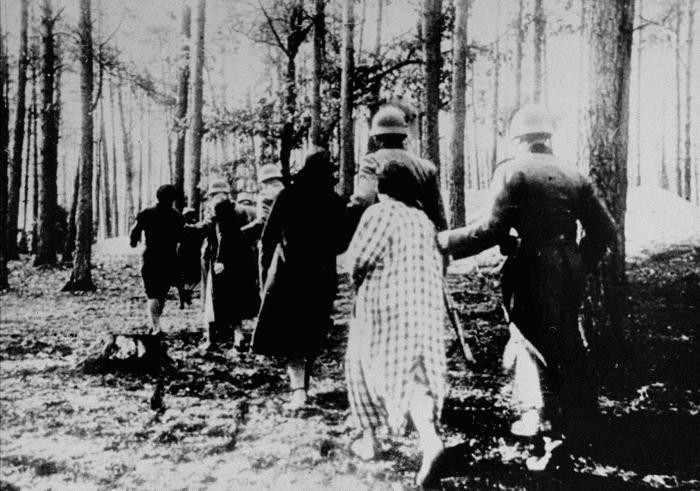
Polish women from the Pawiak and Mokotow prisons in nearby Warsaw are led into the Palmiry forest for execution by SS personnel.
The original caption reads: "Their Nazi executioners leading a group of Polish women, according to the information attached to this picture which was just received through Polish sources. Hundreds of cvilians, men, women and even young children are said to be systematically 'eliminated' under the Nazi scheme of things in war-torn Poland".
Palmiry Forest, Poland, October–December 1939.
Item View![Prisoners being transported from Pawiak prison to be executed by firing squad in the Palmiry forest. [LCID: 50643] Prisoners being transported from Pawiak prison to be executed by firing squad in the Palmiry forest. [LCID: 50643]](https://encyclopedia.ushmm.org/images/large/327ce698-beb9-4b5f-aa80-1bdec4bf3658.jpg)
German police and SS personnel wait with a convoy of trucks during a shooting action in the Palmiry forest near Warsaw. These trucks were used to transport prisoners held in the Pawiak and Mokotow prisons. October–December 1939.
Item View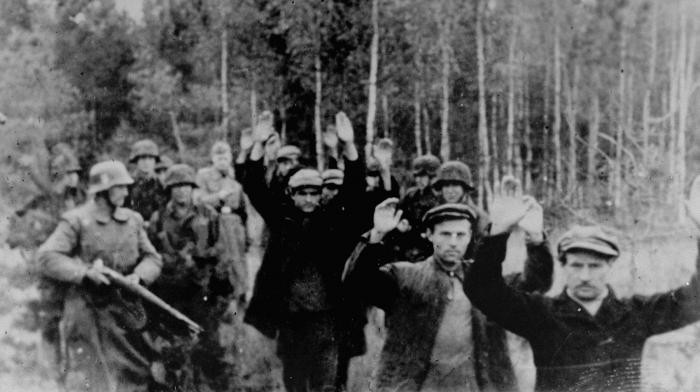
SS troops lead a group of Poles into the forest near Witaniow for execution. Witaniow, Poland, October–November 1939.
Item View![Residents of Bochnia are executed in retaliation for an attack on a German police station by the "White Eagle" resistance organization. [LCID: 61348b] Four uniformed policemen have their rifles raised, facing away from the camera. In the background, several people can be seen on the ground, slumped over each other.](https://encyclopedia.ushmm.org/images/large/b68b70ea-96f9-4a88-b230-cfe1f975ca5f.jpg)
German police execute a group of Poles at the edge of the Uzbornia Grove just outside of Bochnia.
Altogether, 51 residents of Bochnia and the vicinity were shot in reprisal for an assault on a German police station by members of the Polish underground organization "Orzel Bialy" (White Eagle) on 16 December 1939. Bochnia, Krakow, Poland, December 18, 1939.
![A German soldier stands on a toppled Polish monument. [LCID: 50312] A German soldier stands on a toppled Polish monument. [LCID: 50312]](https://encyclopedia.ushmm.org/images/large/a588591d-a165-4637-a6fc-01bf910c77b4.jpeg)
A German soldier stands on a toppled Polish monument. Krakow, Poland, 1940.
This statue commemorated the Polish victory at Grunwald over the Teutonic knights in 1410. In accordance with the plans of German occupation authorities in Poland, all physical symbols of Polish national culture were to be obliterated to make way for the "Germanization" of the country.
Item View
We would like to thank Crown Family Philanthropies, Abe and Ida Cooper Foundation, the Claims Conference, EVZ, and BMF for supporting the ongoing work to create content and resources for the Holocaust Encyclopedia. View the list of donor acknowledgement.